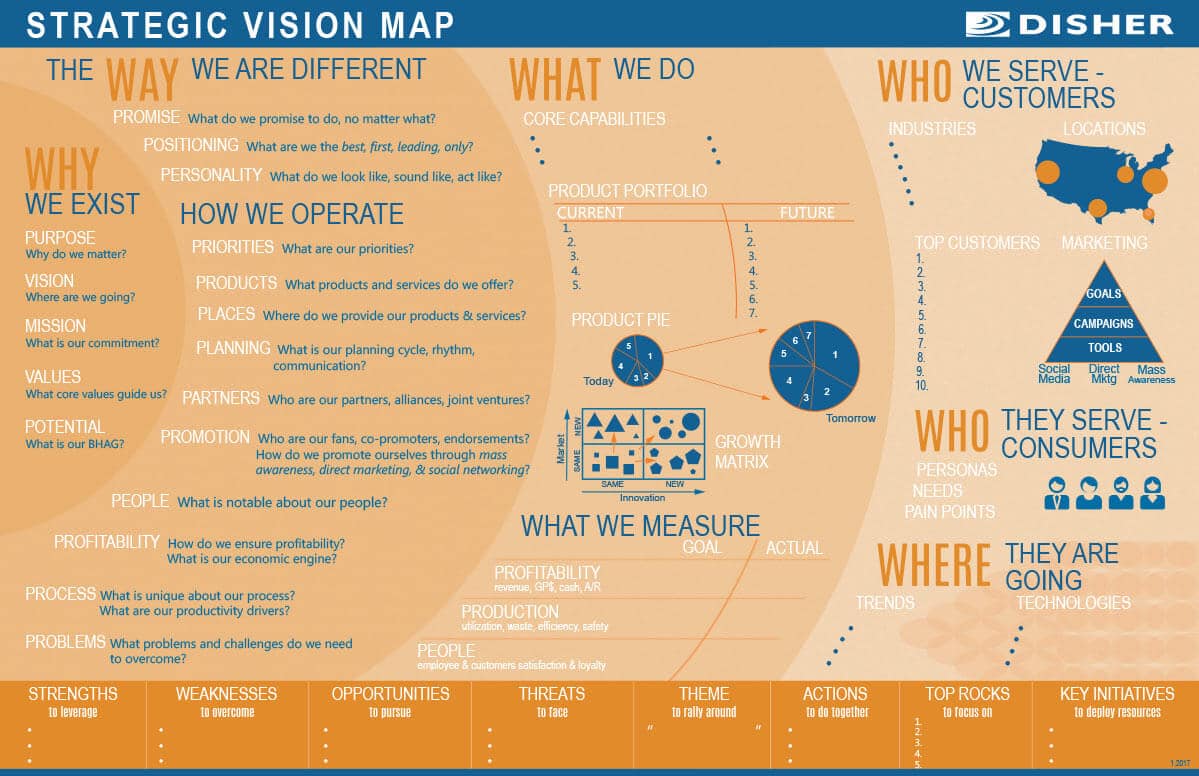Tips to Creating Culture Visuals
August 24, 2017

Written By:
Kevin Pinner | Business Lead | Manufacturing Tech

I love being right… and the importance of creating meaningful culture visuals is one of those times. Being right doesn’t happen as often as I think it should happen but when it does— it feels sweet.
Yes, one of my many personality challenges is the internal conviction that when I have an idea, it is probably a good one. And if someone doesn’t appreciate my good idea, it is probably because I have not communicated it well enough. As you might imagine, this perspective has gotten me into some hot water over the years. The good news is that through the years I have developed better self-awareness. It’s not as big of a challenge as it once was. Haven’t you felt this way yourself at times?
Still… I love being right. And the importance of making culture visuals is an action I firmly believe in. I have personally experienced the combined power of leadership intentionality, culture, and visual communication. Leaders who invest the time and attention in creating a vibrant culture with a meaningful visual work environment are rewarded with an organization that performs at a higher level. Just a few weeks ago, I found someone else who agrees with me on this. Let’s take a look at her example.
Making Culture Visuals – A Case Study
Susan Kamacho, HR Manager at Gemline – a promotional products company, recently gave a presentation entitled, Making Culture Visuals Come Alive. Here’s my summary of her presentation and how Gemline worked through the process of making their culture visual.
The Problem:
Gemline was making steady progress over several years regarding a key organizational initiative which was based on continuous improvement. However, they realized after focusing on tools, systems, and training that they were missing a key ingredient: culture. Different departments within the organization were at varying levels of system and organizational maturity. There wasn’t a common thread tying them together. The leadership team began asking, “What is our culture?” They had assumed that the culture they desired was inherent within their company. But they discovered that not only was it not inherent, but it was not defined or consistent. There were no expectations on what defined their culture. They were trying to define their culture by activities that were happening but had no visual unifying thread that tied it all together.
The Solution:
Gemline benchmarked other companies. They found that firms with visual messaging defining their cultural objectives connected and engaged with their team members better. There was a common goal and mission. Gemline decided they needed to create a culture visual for themselves. The process took careful planning and discussion for about 10-12 months. It required heavy lifting. Gemline had three key takeaways.
Tips to Creating Culture Visuals
1. The words need to be meaningful. Gemline chose words and created definitions that were relatable, definable, and livable.
2. The visual needs to be meaningful. Gemline’s infographic was customized for them. Once it was created, an intense company rollout with training took place. Teams of employees gathered to discuss and refine the visual.
3. The culture visual needs to be incorporated into everyday activity at each level of the organization. Gemline accomplished this by incorporating the words that described their culture (such as: integrity, truth, and humility) into their performance appraisals. They started catching people doing the right thing. They also found that the entire team was less tolerant of behaviors that did not support their culture model.
The Results:
Was it worth all of the work? Gemline enjoyed a faster culture change with the visual than if they had relied on traditional training. Specific benefits Gemline gained include:
1. It reduced employee-relation issues due to the clarity of purpose and expectations. Less time was spent on miscommunication.
2. It became a helpful tool for training and mentoring soft skills for their supervisors. Managers appreciated this as an unexpected benefit.
3. It became a recruiting and onboarding tool. With a convenient visual snapshot of the company’s culture, perspective candidates and hiring managers could quickly identify a match early in the hiring process.
OK… now back to me. I (along with Susan) are right about this one! There is a direct link between organizational culture, visual communications, and the bottom line. And the great news is— DISHER can help you with the process!
We’ve been intentional about our mission from day one. However, it wasn’t until a few years ago that we formally created a visual communication of our company mission and strategy. The process we used is called Strategic Vision Mapping. Strategic Vision Mapping creates a picture of an organization’s mission, values, and direction. It aligns the leadership team with every member of the team. A unified culture brings about a higher level of performance, confident decision-making, and clear action amidst a changing business environment. There are other potential outcomes of the vision mapping process depending on an organization’s strategic needs. Each outcome becomes an infographic vision map that helps paint a picture and act as a reminder of the strategy and its next steps.
Bottom Line? Creating a Vision Map does not need to take 10 to 12 months. DISHER helps teams develop a comprehensive Vision Map within several weeks. The process entails working with the leadership team and probing the 5 Ws: Why you exist, the Way you are unique, What you do, Who you serve, and Where they are located. During the process, we also examine and uncover your SWOT, key initiatives, internal themes, and ultimately what needs to be measured to ensure long-term success and viability.
The vision map below is a template we use to guide customers through the process. The culmination of the process is a custom visual communication which captures the culture, heartbeat, and direction of the organization.
After the visual is created, it does take an extended amount of time to build a thriving culture. DISHER often comes alongside as a trusted advisor and helps organizations of all sizes navigate the journey together. We combine customized research, diagnostics, and organizational development expertise to help bring positive change throughout an organization one step at a time.
Let us help you do the right thing. If you would like to experience DISHER’s culture firsthand, please sign up for one of our regularly scheduled Culture Tours. Both private and public tours are available. OR to learn more about reaching a higher level of performance through Strategic Vision Mapping or Organizational DevelopmentROI
Written By: Kevin Pinner, Business Lead – Manufacturing Tech Services
Kevin enjoys improving processes – manufacturing or business processes. When he isn’t doing that, he enjoys playing soccer, running, mountain biking, and driving old sports cars. Kevin has a BS in Industrial Management and MBA in Finance. Kevin leads the Disher Manufacturing Tech Services and DISHER Business Solutions Teams.




